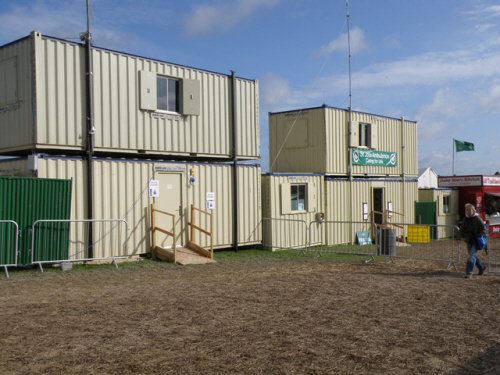Even in the tough economic climate we find ourselves in today many consumers still maintain a social conscience, and when a choice arises between companies that adopt a sustainable and responsible approach to the environment and those that clearly couldn’t care less, the vast majority of right thinking individuals will opt for the ‘greener’ of the two.
So how does this apply to portable buildings?
Portable buildings are more environmentally sustainable at every stage of their construction and installation, all the way through to their day-to-day use. Many people are falsely led to believe that adopting an eco-friendly approach to business leads to inefficiencies and an increase in running costs. In this instance, this is clearly not the case.
Portable buildings have come on leaps and bounds over the past couple of decades. Many of you reading this article will be picturing the dingy little structures of old. But modern day portable buildings can become anything you want them to be, with a range of options which can make them suitable for use as offices, canteens, changing rooms, toilets, showers and even classrooms. Alongside these developments has come an eye for energy conservation, with the very latest in computer aided design software being used to design portable buildings which are energy efficient and create the smallest amount of waste. Prolonged testing over the last few years has shown portable buildings to be, on average, 67% more energy efficient than traditional fixed structures representing a considerable reduction. (Source: Arup Research and Development)
Outdated views of portable buildings perceive them as inefficient in terms of their energy usage once the manufacture and installation has been carried out. This is not the case. Portable steel framed buildings are heavily insulated and precisely constructed to ensure a high level of thermal efficiency and air permeability which meets the most exacting of standards. Recent testing has in fact shown that portable buildings, even those that are nearing the end of their natural life, exceed building regulations which govern air permeability by up to 50% (Source: Building research Establishment BRE).
Logistically speaking, there are further energy efficiencies which result from the assembly of portable buildings. In the majority of cases, portable buildings are assembled on the manufacturer’s site, where all the parts required for assembly are located. It will then be transported as a fully assembled unit to the customer’s location and installed. In the construction of traditional bricks and mortar structures, many more vehicle movements are needed to transport the raw materials from external suppliers to the site.
Currently there are a number of organisations across the UK embracing the energy efficiency of portable buildings. Royal Ascot have recently installed a new VIP ticket box, whilst Hereford United Football Club are reaping the benefits of three new portable changing rooms.
When the portable buildings are no longer required or they need to be updated, they can be simply and quickly taken down and recycled or redesigned.
By Portable buildings from Severn Ready Space, a leading manufacturer, providing spacious, cost effective and energy efficient infrastructure solutions for a variety of applications.
Image credit: Michael Trolove at Wikimedia Commons under a Creative Commons license.

